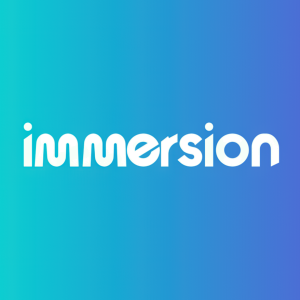Immersion Signs Agreement to Make Haptic Technology Licenses Available Through Vishay Intertechnology
Immersion Corporation (NASDAQ: IMMR) has signed a license agreement with Vishay Intertechnology, Inc. (NYSE: VSH) to bundle haptic patent licenses for Vishay's solenoid-based haptic actuators. This partnership aims to simplify the design-in process, allowing OEMs easy access to Immersion's haptic technology without separate licensing agreements. Both companies expect this collaboration to enhance customer experience and promote the adoption of near HD quality haptic technology across various applications.
- Licensing agreement streamlines access to haptic technology for customers.
- Collaboration may enhance market competitiveness for both companies.
- None.
Insights
Analyzing...
“We are very pleased to establish a partnership with Vishay,” said
“We are excited to have this unique opportunity with Immersion to offer licensed, solenoid based haptic actuators to our customers,” said
About Immersion
Immersion, and the Immersion logo are trademarks of
About Vishay
Vishay manufactures one of the world’s largest portfolios of discrete semiconductors and passive electronic components that are essential to innovative designs in the automotive, industrial, computing, consumer, telecommunications, military, aerospace, and medical markets. Serving customers worldwide, Vishay is The DNA of tech.™
The DNA of tech™ is a trademark of
Forward-looking Statements
This press release includes forward-looking statements within the meaning of Section 27A of the Securities Act of 1933, as amended, and Section 21E of the Securities Exchange Act of 1934, as amended. The forward-looking statements involve risks and uncertainties. Forward-looking statements are identified by words such as “anticipates,” “believes,” “expects,” “intends,” “look,” and other similar expressions. However, these words are not the only way we identify forward-looking statements. Examples of forward-looking statements include any expectations, projections, or other characterizations of future events, or circumstances.
Because forward-looking statements relate to the future, they are subject to inherent uncertainties, risks and changes in circumstances that are difficult to predict and many of which are outside of our control. Actual results could differ materially from those projected in the forward-looking statements, therefore we caution you not to place undue reliance on these forward-looking statements. Important factors that could cause our actual results and financial condition to differ materially from those indicated in the forward-looking statements include, among others, the following: general business and economic conditions; manufacturing or supply chain interruptions or changes in customer demand because of COVID-19 or otherwise; the inability to predict the outcome of any litigation, the costs associated with any litigation and the risks related to our business, both direct and indirect, of initiating litigation; unanticipated changes in the markets in we operate; delay in or failure to achieve adoption of or commercial demand for our products or third party products incorporating our technologies; the loss of a major customer; the ability us to protect and enforce our intellectual property rights and other factors. For a more detailed discussion of these factors, and other factors that could cause actual results to vary materially, interested parties should review the risk factors listed in Vishay’s and Immersion’s respective Annual Report on Form 10-K for 2021 and in each company’s most recent Quarterly Report on Form 10-Q which are on file with the
(IMMR – C)
View source version on businesswire.com: https://www.businesswire.com/news/home/20230109005228/en/
Investor Contact:
514-987-9800 ext. 5110
aakerman@immersion.com
Source:







